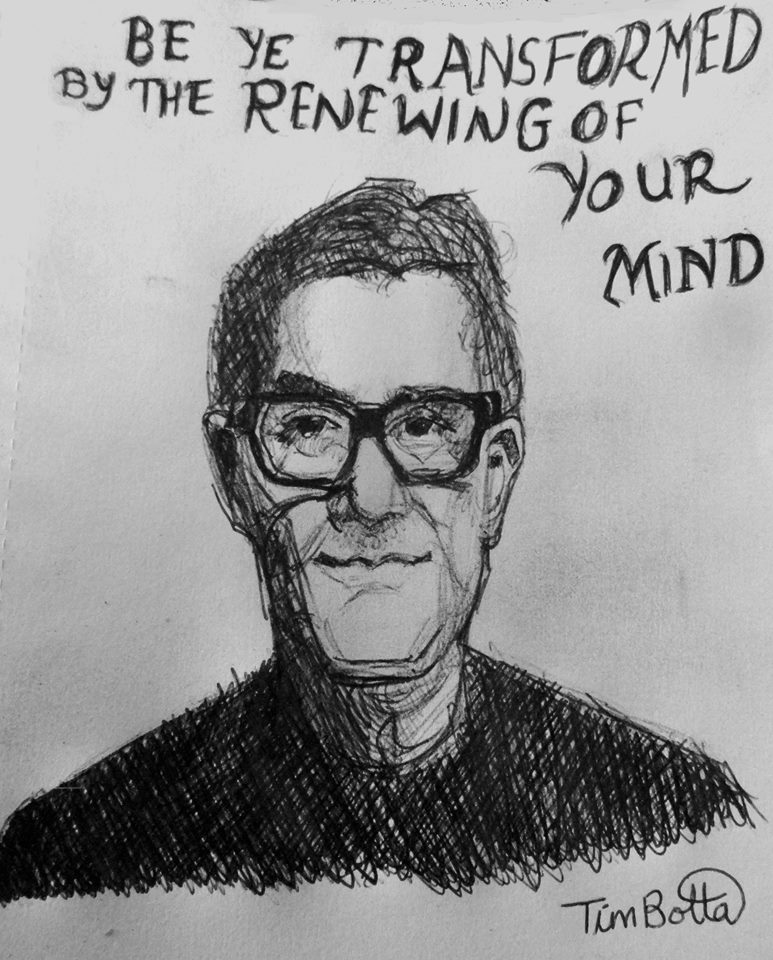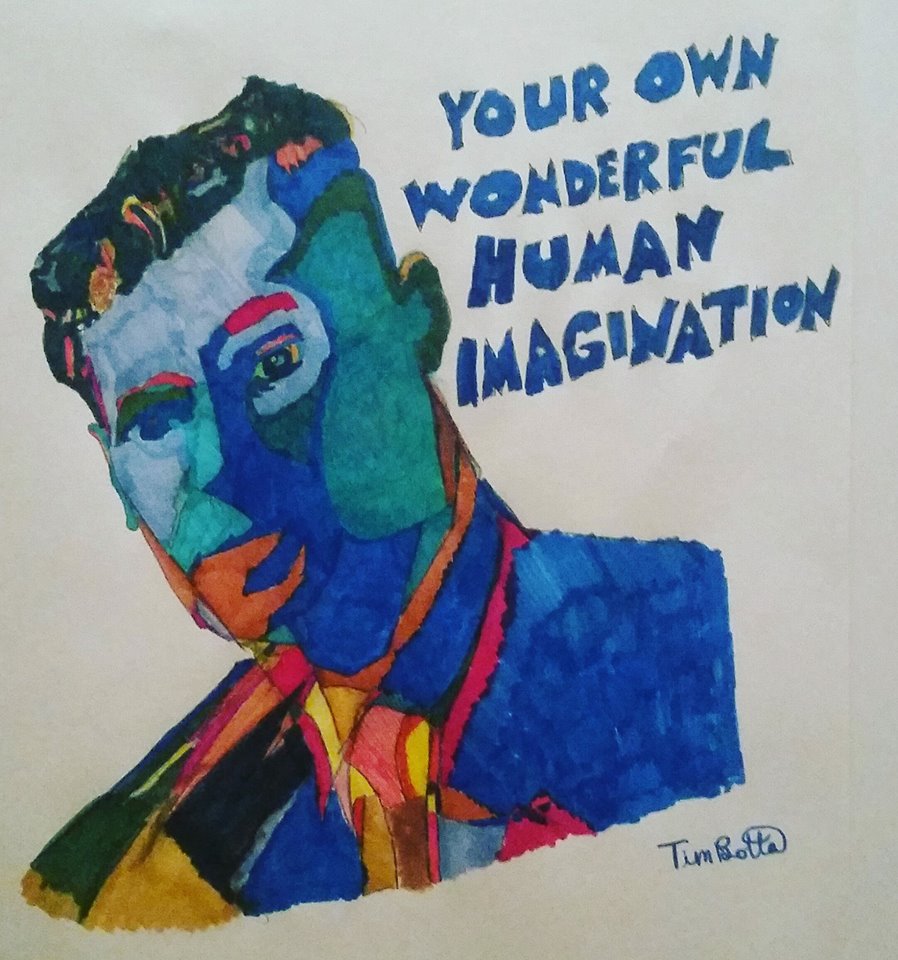Harv Bishop is a professor of Political Science at University of Colorado Denver. As curator of his blog www.harvbishop.com, Harv posts sharp, thoughtful essays on the New Thought Movement, both essays of his own and those of other contributors. He is also the editor of New Thought (R)evolution, a significant collection of essays, and is a major Beatles fan. In this, the inaugural Mystics, Cats, & Places Interview, Harv discusses topics including the spirituality of Denver, Colorado; a first memory; the communion cup of St. Francis; spiritual bypass; predictive dreams; the power of provocative titles; and the White Album.
Where do you live? How do you think your geographical surroundings influence your spiritual path?
In the Denver area near Colorado’s foothills and mountains. Clearly our mountains, as in many places in the world, inspire awe and wonder and spiritual reflection. The Denver Boulder area also has a strong Alternative Spirituality, New Age and Buddhist influenced subculture, and hosts one of the largest New Thought churches in the world. It has been a rich environment both in terms of nature and spiritual culture throughout my life.
What is your first memory (from this or another lifetime)?
That’s a rich question. My first memory from this lifetime is mundane. I was a toddler and stepped barefoot on some very dry grass and drew blood. The second part would take a book. I have had what I perceive as far/past life memories, and the mystery of that, and those memories that were traumatic, made my spiritual search a primary focus of my life now.
You've said that you were brought up in an atmosphere of New Thought spirituality. Do you remember the first New Thought book you ever read?
The first New Thought book I read was Ernest Holmes’ The Science of Mind when I started attending a New Thought church as a teen. I also enjoyed Trine’s classic In Tune with the Infinite. Our family was very much into Alternative Spirituality. My dad read Edgar Cayce and my mom read books by Ralph Waldo Trine, Joel Goldsmith and Mary Baker Eddy. So my mom had the strongest passion for New Thought. She read parts of those books to me when I was younger.
I’ve recently been reading A Course in Miracles for the first time. What do you think of this text? Is there a spiritual classic you haven't read yet but are anticipating reading?
I haven't read the full original text, so am not qualified to comment. I have read books inspired by the course and especially remember Jerry Jampolsky’s work as inspiring. The classic I’m finally tackling, and excited about, is Valentin Tomberg’s Meditations on the Tarot.
Many people have reported strange, vivid dreams during the pandemic. Is there a dream or nightmare you've had that you'd like to relate? Do you find inspiration or guidance in dreams?
I do find inspiration and guidance in dreams, but it tends to go in waves, with long periods of mundane dreams punctuated by so-called Big Dreams. I did discuss one apparent precognitive example in a blog post. The night before Diane and I planned to go to a matinee at a new theater we had never been to, I dreamt I was in a store in an eastern Denver suburb far from the theater and encountered a smart-ass female clerk. The next day we got lost, never made it to the theater, and made multiple random wrong turns. I saw a health food grocery and decided to grab some salsa. While checking out I encountered the smart-ass clerk and we were indeed in an eastern suburb. There aren't words for how many random turns we made that day (before we had GPS) and we were miles from the theater. How could a part of me have known of that future encounter given all the apparent randomness to get there?
You've explored the shadow side of New Thought. Given how problematic the New Thought belief system can be, what keeps you from rejecting it outright?
Good question. I have rejected much of its organized form outright due to the inevitable hypocrisy, but I still believe there is value in the core teachings of Oneness and recognizing the divine in others and all creation. Mitch Horowitz has been a wonderful guide in this respect. Reject inflexibility and honor nuance, mystery and questions. There’s too much mystery in life to have a one-size fits all approach to matters spiritual. The more I study, the less I know for sure.
We hear the term "spiritual bypass" a lot. How would you define it? Is it prevalent in the spirituality realm?
I understand it to mean that spirituality can’t fix everything and provide an escape hatch from the ups and downs of life and suffering and loss. Can it help? Yes, it does provide a wider, deeper context for suffering, but it doesn’t yield a get out of jail free card. Spiritual bypassing is in all forms of spirituality to some extent. I used to think I could meditate away suffering and float above it all just blessing people. How did that work for me? Not so much. There’s a place for therapy and there’s a place for meditation.
Is there a place you've traveled to that immediately gave you a feeling of spiritual connection?
Two places. First, the outdoor garden space at Mount Washington where Yogananda taught. It’s called The Temple of Leaves. There was a very strong energy field there. Second, seeing St. Francis’s communion cup in Assisi, Italy. Huge third eye energetic impact.
Which period in history do you most enjoy reading/learning about?
Enjoy may not be the right word, but I find Berlin in the 1920s prior to the rise of Nazism, a fascinating time period, especially in terms of art and German expressionism in the cinema.
I've always thought the titles of your blog posts were so striking. What is the secret to creating a great title? What are some things do you think people can keep in mind when writing about the spiritual?
That’s due to my wife Diane’s creativity. She’s my editor and my muse. She’s able to distill the message in a catchy way. Titles need a hook to draw people in. Funny story. One of my blogs was entitled when Ernest Holmes was Wrong. It highlighted how Holmes, the founder of Religious Science, was time and culture bound in some of his ideas about race and gender as we all have been and can still be. Some people were pissed. It was clear they were reacting to the title and not the nuance in the story. SImilarly with the New Thought’s Darth Vader Move post that was part of the inspiration for Gary Lachman’s great book Dark Star Rising: Magic and Power in the Age of Trump. People were angered by the blog title. Sometimes I am so tempted to say read the full post before hot-reacting! In terms of writing about the spiritual, I’ll go back to what I learned from Mitch. Strive to keep it understandable and respect mystery and questions rather than certainty. Be honest about what you don’t know about your spiritual search. Don’t pretend to be flawless and have it all handled. That’s a perspective that is also core in my studies of Jewish mysticism with my rabbi. We can simultaneously be fully human with all the mistakes and stumbles that entails and fully divine at the level of the soul. Problems result when we ignore one or the other. It’s both/and.
I gather that you love the Beatles, as do I. Some of your favorite songs from the White Album?
Amen, brother! While My Guitar Gently Weeps, Birthday, Dear Prudence, and when I’m in the right mood, Helter Skelter. This list could (and does) change every so often. All-time favorite Beatles song (from the same time period) is Hey Jude. I wore out two copies of the 45 rpm single at the time. Must have driven my parents over the moon. My dad did teach me how to noodle out the chorus of Hey Jude with my thumb and forefinger on the piano. He did it by ear. I miss him.


















































































































